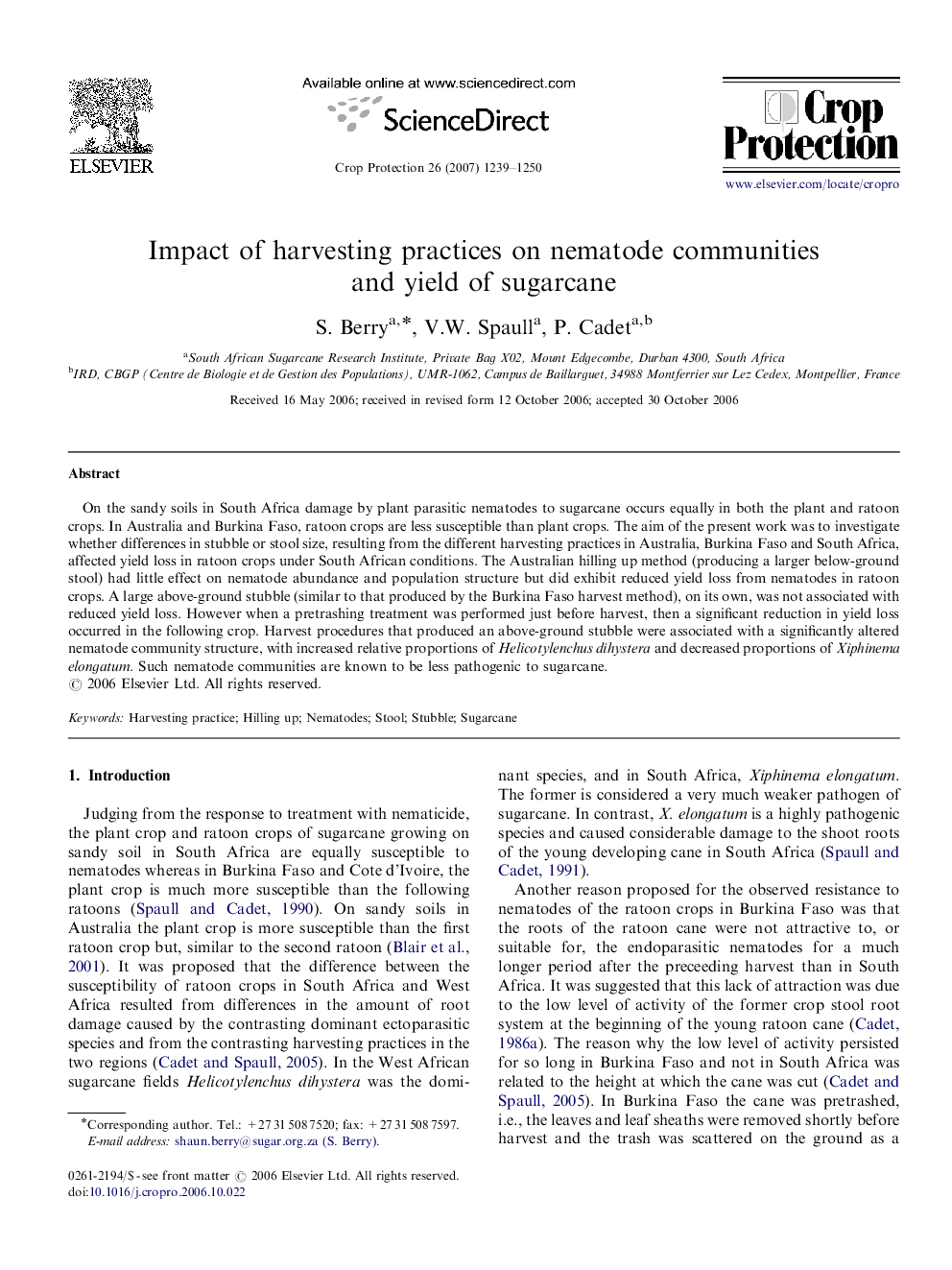| Article ID | Journal | Published Year | Pages | File Type |
|---|---|---|---|---|
| 4507962 | Crop Protection | 2007 | 12 Pages |
On the sandy soils in South Africa damage by plant parasitic nematodes to sugarcane occurs equally in both the plant and ratoon crops. In Australia and Burkina Faso, ratoon crops are less susceptible than plant crops. The aim of the present work was to investigate whether differences in stubble or stool size, resulting from the different harvesting practices in Australia, Burkina Faso and South Africa, affected yield loss in ratoon crops under South African conditions. The Australian hilling up method (producing a larger below-ground stool) had little effect on nematode abundance and population structure but did exhibit reduced yield loss from nematodes in ratoon crops. A large above-ground stubble (similar to that produced by the Burkina Faso harvest method), on its own, was not associated with reduced yield loss. However when a pretrashing treatment was performed just before harvest, then a significant reduction in yield loss occurred in the following crop. Harvest procedures that produced an above-ground stubble were associated with a significantly altered nematode community structure, with increased relative proportions of Helicotylenchus dihystera and decreased proportions of Xiphinema elongatum. Such nematode communities are known to be less pathogenic to sugarcane.
